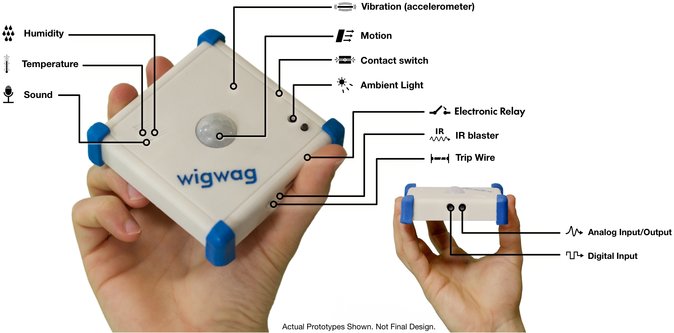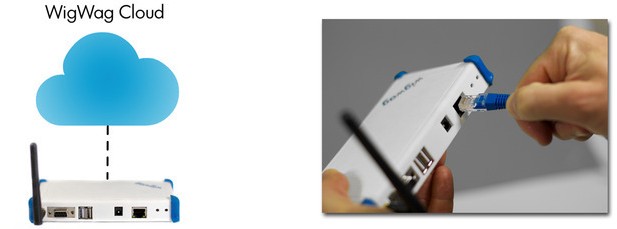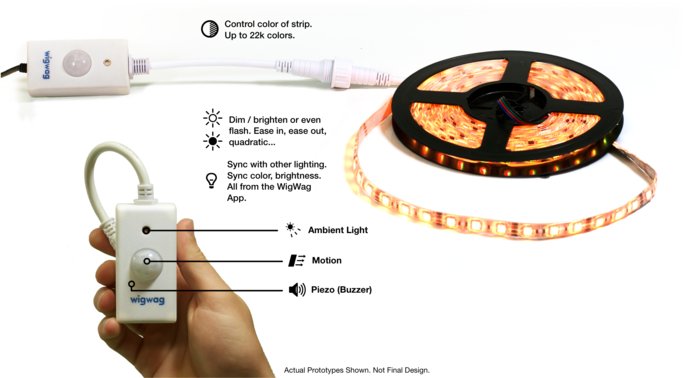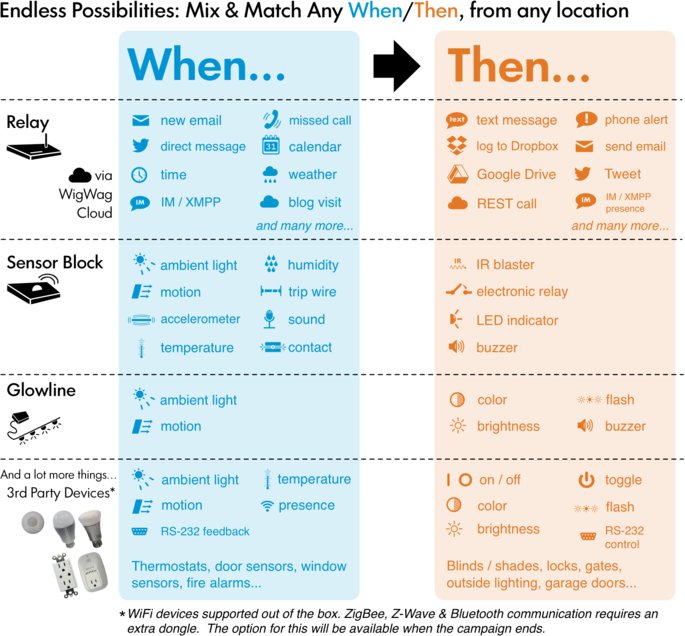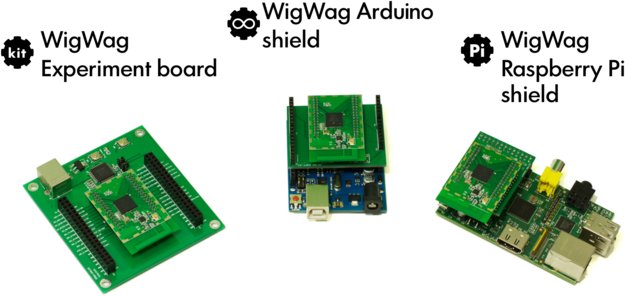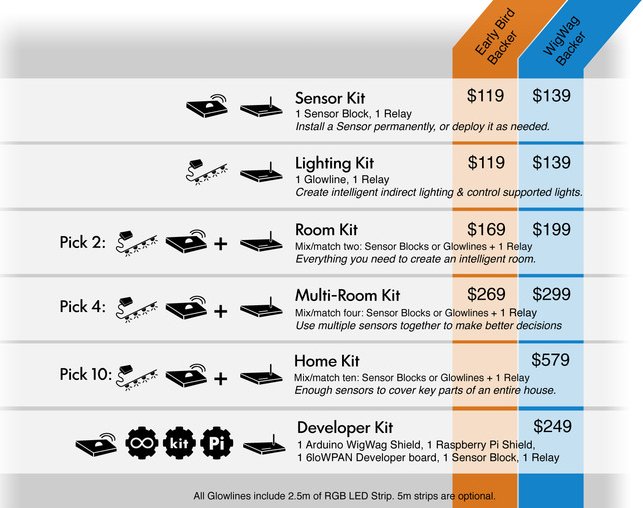WigWag is an home automation kit aiming at simplifying home automation, yet allowing developers to roll their own system via Arduino and Raspberry Pi Shields. Wigwag is currently composed of three devices:
- WigWag Sensor Block – Universal sensor device with 8 environmental sensors (light, detect motion, sound, temperature, humidity, movement…), 4 control features (relay, IR blaster…), and 2 expansion ports. It can be powered by 4x AA batteries (possibly for up to 1 year), or a USB power adapter. This device runs Contiki OS on Freescale MC1322 MCU (with built-in 6LoWPAN radio).
- WigWag Relay – Connects WigWag and third party devices to their cloud service, allowing interaction with Internet services, such as email, Dropbox and Twitter. It acts a bit like a central server managing all your WigWag Sensor Blocks or other connected devices such as Phillips Hue light bulbs or Belkin WeMo outlets in your house. IP networks (Wi-Fi & Ethernet) and RS232 support is built-in, but Zigbee, Z-Wave or Bluetooth Low Energy can be added via optional dongles. This devices runs embedded Linux on AllWinner A10 SoC with 1GB DDR2 RAM and a 2GB SD card.

- WigWag Glowline – Smart 2.5m RGB LED strip lighting (upgradeable to 5m) with motion and light sensors, and a buzzer. You can change the color and brightness, and make it behave depending on sensors data.

Those 3 devices, and other connected “things” communicate via 6LoWPAM, and you can setup “rules” via an Android or iOS application, or via your web browser, for example: When “motion” then turn “lights on” and “notify phone”. Possibilities are listed in the table below.
As I mentioned as the top of the post the system can also interact with Raspberry Pi and Arduino boards, and a developers kit is available with WigWag Experimenter board, a Raspberry Pi shield, and an Arduino shield, as well as WigWag Relay and Sensor Block. The Arduino Shield will let you configure your Arduino board like a Sensor Block, whereas the Raspberry Pi can act like both like WigWag Relay and Sensor Block running Raspbian with DeviceJS, an open-source runtime for executing Javascript.
Software for the Arduino and Raspberry PI development boards will be available on Github, and hardware designs for the Development kits will be provided once those are ready to ship.
WigWag is on Kickstarter, and already funded, to start mass-production for the devices. The lowest pledge still available ($139) will get you a SENSOR KIT with 1 Sensor Block and 1 Relay, where as the developer kit goes for $249. Shipping is free to the US, but you’ll need to add between $15 to $30 for international shipping depending on the pledge. The different options are clearly explained in the table below.
Via LinuxGizmos

Jean-Luc started CNX Software in 2010 as a part-time endeavor, before quitting his job as a software engineering manager, and starting to write daily news, and reviews full time later in 2011.
Support CNX Software! Donate via cryptocurrencies, become a Patron on Patreon, or purchase goods on Amazon or Aliexpress


